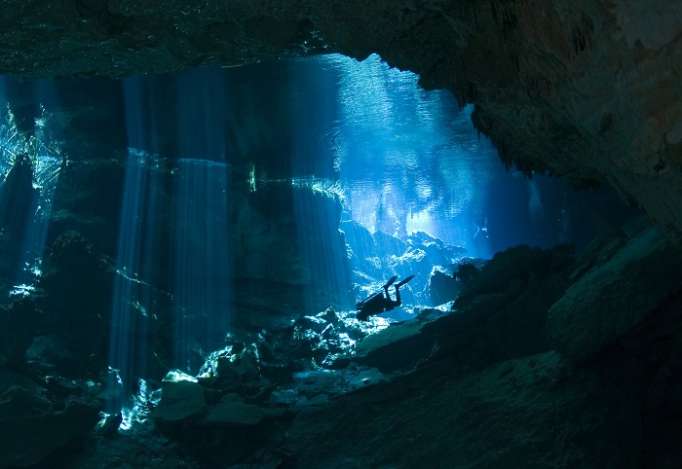The group was comprised of divers from the Gran Acuifero Maya project, which is dedicated to the study and preservation of the waters of the Yucatan Peninsula and has been studying the cave systems for over 20 years. The divers made the discovery while exploring two known cave systems at the tip of the peninsula, near the beach resort Tulum.
The divers were investigating the Sac Actun cave system when they discovered an unexpected subaquatic tunnel that connected the 163-mile-long Sac Actun cave system to a nearby smaller cave system, the 52-mile-long Dos Ojos.
Due to this discovery, the Dos Ojos system is now considered a part of the Sac Actun system.
“This is an effort of more than 20 years, to travel hundreds of kilometers of caves submerged in Quintana Roo mainly, of which I dedicated 14 years to explore this monstrous Sac Actun System; now everyone’s job is to keep it,” said Robert Schmittner, the lead of the GAM exploration team.
On the floor of the subaquatic tunnels, divers also discovered artifacts from the Maya civilization, including ceramics, extinct plant life, and even human remains.
Researchers hope that as well as shedding light on Mexico’s subterranean water geography, the discovery can help in understanding more about the ancient Maya civilization.
The entire Yucatan Peninsula is home to remnants of the Maya people, but the cave system is what most interests archeologist Guillermo de Anda, as he claims it will help understand the culture of the region, which was home to the Maya people until the Spanish conquests.
“It allows us to appreciate much more clearly how the rituals, the pilgrimage sites and ultimately the great pre-Hispanic settlements that we know emerged,” he said.
A large part of Maya culture revolved around subterranean waters known as cenotes. Throughout the region, Maya people were known to deem some cenotes as holding particular religious significance. Several cenotes were known to have been used for human sacrifices, and indeed human remains have been found at the bottom of them.
More about: Mexico
















































